Determining stellar masses
To undetstand temperatures and luminosities, we found that
we needed to know about stellar masses.
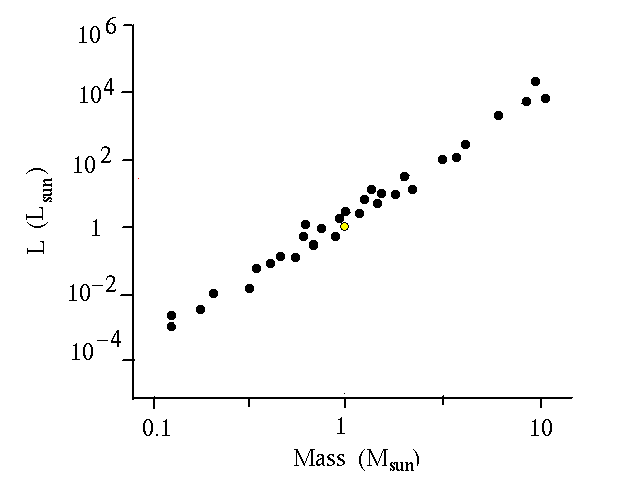
How can one measure the mass of a star in order to place it on
this graph? We can do that if two stars are in orbit about each other.
Gravity and orbits
First, we need to know about how gravity
works and how it makes objects in space orbit about each other.
Using Newton's laws, we can measure the sum of the masses of the
two stars if we can measure the period P
and the semimajor axis a of the orbit:
 Here we measure the masses in units of Msun, the semimajor
axis in AU and the period in years.
Here we measure the masses in units of Msun, the semimajor
axis in AU and the period in years.
That doesn't tell you what the individual masses of the stars are.
But if you can also measure the ratio of the distances from the two
stars to the center of mass, that tells you the ratio of the masses,
using
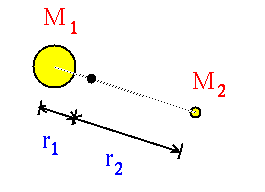
M1/M2 = r2/r1
.
Binary stars
There is no direct way to measure the mass of a star that is just
sitting by itself in space. But about half of the stars we see are
actually binary star systems. For some such systems, astronomers can
determine the masses of the stars by combining measurements with what
we know about gravity.
Visual binaries
If the binary system is close enough then we can see the stars in
orbit about their center of mass in photographs taken over a period of
years.
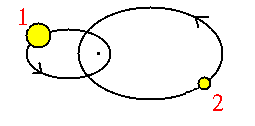
- The photographs tell us about the motion of the stars across our
line of sight.
- This gives us angles.
- To convert angles to distances in AU, we need to know the distance
to the binary system.
- The distance can come, for instance, from parallax measurements.
- Doppler shift measurements of the light coming from the two stars
tell us about the motion along our line of sight.
Given complete information about the orbits, we can work out the
masses M1 and M2 as described above.
Spectroscopic binaries
If the binary system is too far away to see the individual stars moving
about their center of mass, we may still sometimes get mass information.
- Doppler shift measurements of the light coming from the two stars
tell us about the motion along our line of sight.
- We have to be able to see lines from both stars. (If one star is
too dim relative to the other, this doesn't work.)
- Then one star is moving away while the other is moving toward
us.
- So one star is blueshifted while the other is redshifted.
- After half a period, the first star is moving away from us
while the second is moving toward us.
- So the first star is redshifted while the other is blueshifted.
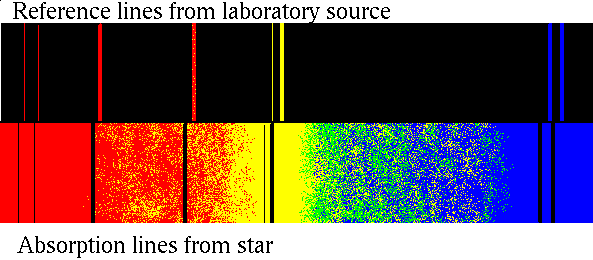
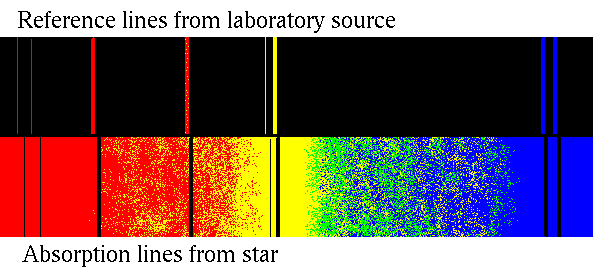
What one sees is the two spectra superimposed.
Here is a little program from Cornell that shows you how the spectral lines vary.
Unfortunately, we only get information about the motion along our
line of sight. If we knew the tilt of the orbit plane relative
to our line of sight, this would be enough. But we don't ...
Eclipsing binaries
If the orbit plane is exactly along our line of sight, then
the two stars will eclipse each other. That tells the orbit orientation.
Then we can put together the orbit information to get the masses of
the two stars.
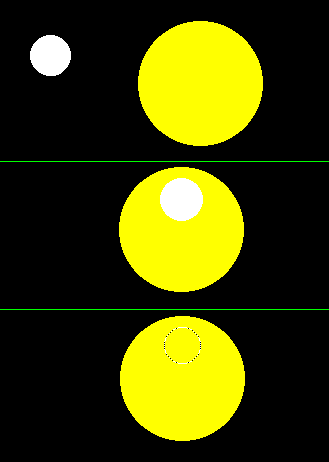
More information is available from the light curve of the
eclipsing binary. For instance, one can get iformation about the sizes
of the two stars.
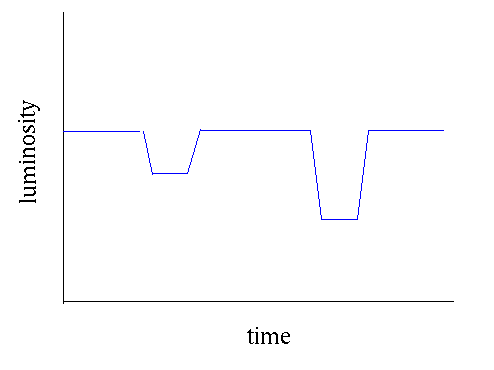

Here is a little program that shows you how the light output from an eclipsing binary looks.
ASTR 122 course home page
Updated 31 Octobber 2007
Davison E. Soper, Institute of Theoretical Science,
University of Oregon, Eugene OR 97403 USA









